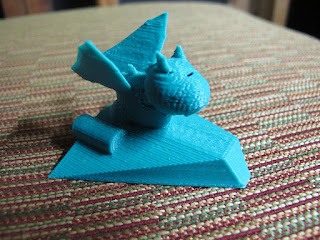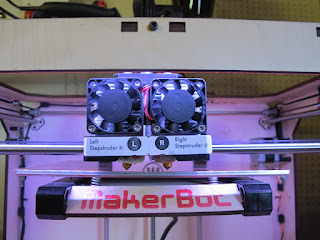Did I mean to print spaghetti? Nope! So, the first thing we printed was a calibration item, to check if everything was setup correctly. Well, of course, it wasn't! This item is for sure for "early adopters", and we knew it when we bought it. It takes debugging, patience, but the rewards are there. And, the online community of early adopters on this tool is amazing, passionate, & very collaborative.
How'd it go so wrong? Why spaghetti? Well, this thing prints layer by layer, and, like so many things, the first layer is the foundation, and if you get that foundation wrong, it's all crud on top. We had to go back to square 1, & calibrate the spacing between the platform & the extruder tips. And, from some online tips, found it's best to cover the sides to keep it warm.
After some adjustments, FIRST PRINT SUCCESSFUL! Here's an image of the "custom medal" that I made. My kids love getting coins from swim class, & medals from school, so I made some custom medals to print for fun & motivation.
I designed the medal using a free 3D CAD tool called Blender. Like most other CAD tools, it has a rather steep learning curve, but it only took me an hour or so to design this, as I have many years experience in other CAD tools. It also took my 8 year old son about 2 hours to build his first model, since 8 year olds are 110% learning machines!
This is truly exciting for the Schmitt household. It's truly empowering to "Imagine it. Design it. Build it." All in one hour!
Kids? Well they are born into the world in it's current state, & don't appreciate how fast things have improved since their father's day. I was able to explain to my 8 year old son, that just 15 years ago, when I was a mechanical engineer, design-to-reality was a 2-4 week process, costing $2-10k. And, that iterations (build, learn, redesign, rebuild) took 2-4 weeks as well. Now, with this MakerBot, we can do 4 iterations per day, easily! This truly is the future of invention & manufacturing, and I'm very excited!

















































